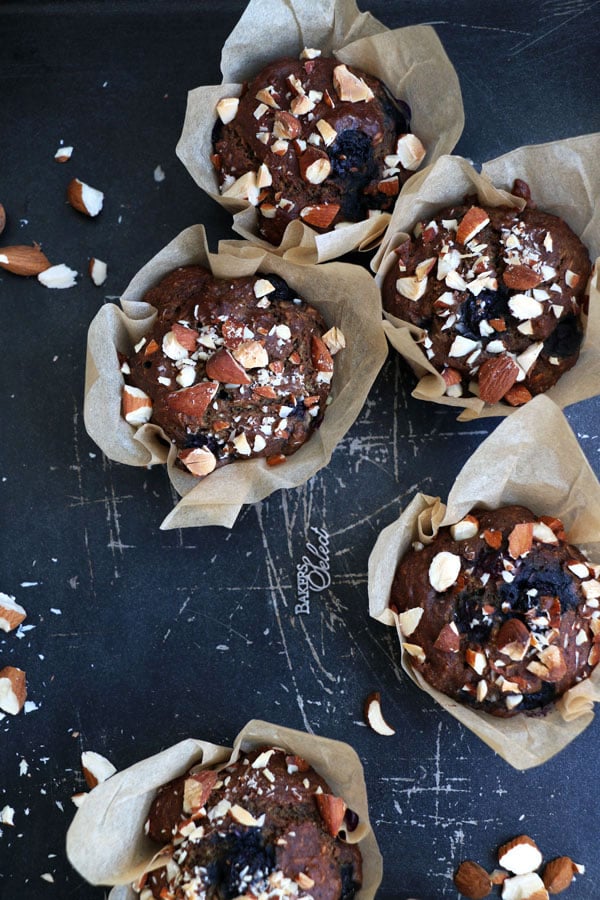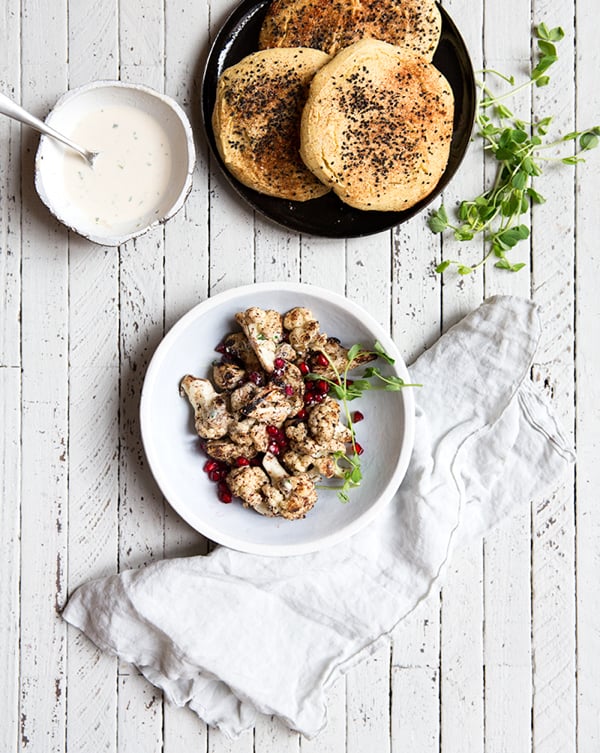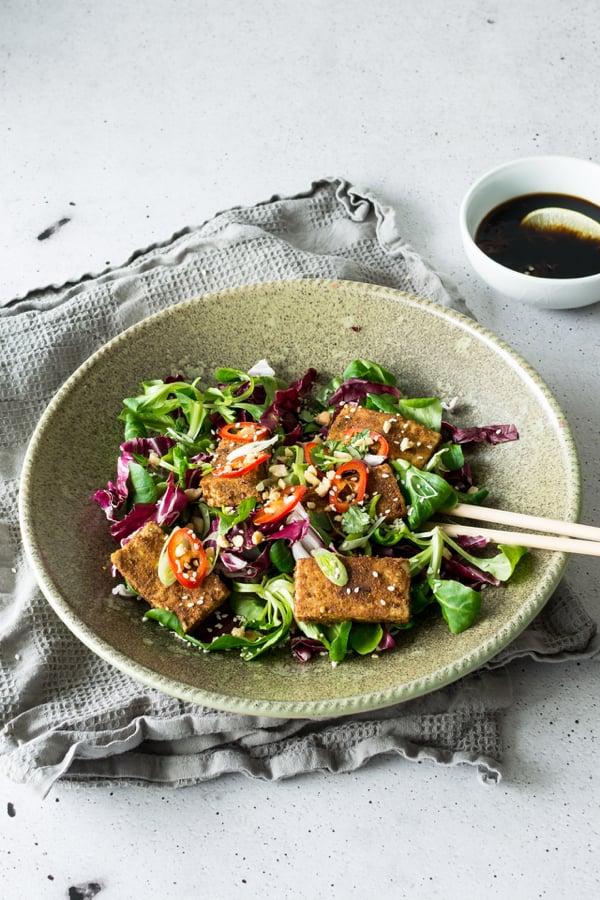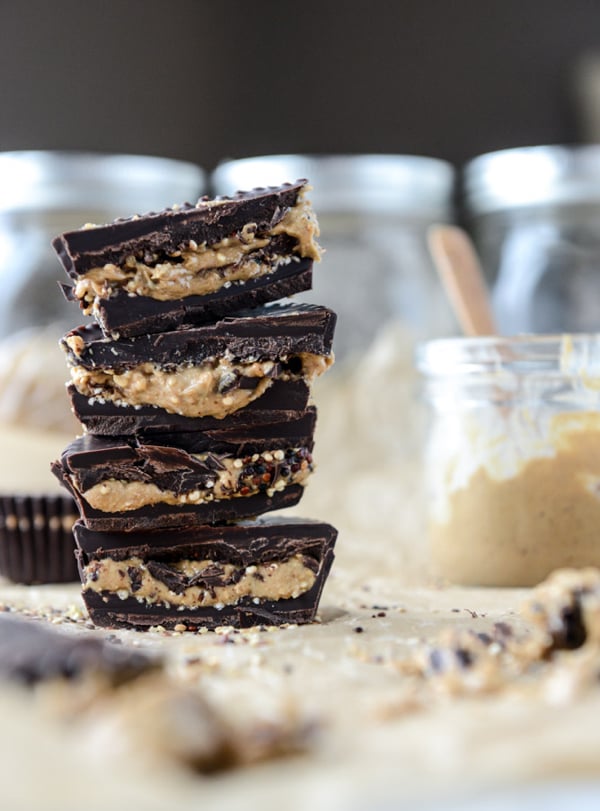Happy Sunday, everyone. Thank you so much for your comments on Jen’s green recovery story on Friday. I know that they’re meaningful to her, and I always appreciate the chance to hear your insights.
Speaking of green recovery, it’s now officially National Eating Disorder Awareness Week. In honor of that, I’ve put together weekend reading links that include articles and essays about EDs. I hope you’ll find them interesting and informative, and if you think any of them might be worth sharing with family, friends, or loved ones, then I encourage you to do so.
But before we dive into some reading, no weekend post would be complete without a recipe roundup!
Recipes
First up, some breakfast fare. These banana blueberry muffins from Hana of Nirvana Cakery are super wholesome, thanks to a base of buckwheat and teff flour, and they look delicious. Frozen blueberries would be an easy swap for fresh at this time year.
Jodi of What’s Cooking, Good Looking has done it again, this time with a creative recipe for cauliflower shawarma and homemade chickpea pita bread. So tasty, not to mention visually appealing. The chickpea pita is not vegan, but I’d love to give it a shot with 1 1/2 flax, chia, or Ener-G eggs — let me know if you happen to try it successfully! And of course, regular or whole wheat pita would be great with the shawarma, too.
I love Lauren Caris’ recipe for dry rub tofu salad with chili lime dressing. The tofu is dredged in a flavorful mix of spices, and the salad offers plenty of brightness and crunch.
Speaking of salads, Lyndsey Eden’s warm shallot fried farro salad with kale, roasted carrots, and miso cashew cream looks just divine! A perfect wintertime salad.
Finally, dessert. I’m drooling over Jessica’s four ingredient toasted quinoa cashew butter cups. So easy to make, and so decadent!
Reads
1. I think Suzannah Weiss’ article, 7 Common Misconceptions about Eating Disorders and How They Actually Work, was spot on. Weiss delves into many of the most problematic, common assumptions about eating disorders and disordered eating, including “if you don’t have an eating disorder, your eating is not disordered” (a particularly harmful myth, and one which prevents many women and men from seeking help), “eating disorders are a choice” (as the author notes, “nobody sits down and thinks ‘I’d like to have the compulsion to binge and purge’ or ‘I’d like to have such a crippling fear of food that I need to be hospitalized so that people will make me eat’) and “it’s obvious when someone has an eating disorder” (false–and people with EDs become experts at hiding it).
She also blasts the idea that men and women with EDs are trying to be sexy or desirable. Certainly they’re often influenced by social constructs of beauty and acceptable body shape, but the causes of EDs and disordered eating are usually much deeper and far-reaching than that, and sometimes disorders are actually tied to fear of or rejection of sexuality.
Being told, when you’re struggling, that “men like curves” (something I heard all the time when I was sick) is not helpful. As Weiss notes, “what men supposedly like has very, very little to do with why women binge, purge, or starve.” Not to mention the fact that gendered statements like this turn EDs into a women’s problem, ignoring the many thousands of men who struggle with disordered eating and eating disorders, too.
2. I love Kari Highman’s article on the lack of attention and awareness that surrounds Binge Eating Disorder (BED), which affects about 3.5 percent of women, 2 percent of men, and 1.6 percent of adolescents in the United States. Highman captures the feelings of pain that can result from having one’s disorder minimized by well-intentioned, yet oblivious advice:
“I have been told by some that I should simply “eat three meals” or that I should just “exercise some more.” Much like people with anorexia or bulimia nervosa, comments like these can make the behaviors even more obsessive and dangerous. When people make these remarks I can’t help but think: ‘Oh well I’m already running a mile a day, but they can see I’m fat, so I must run two more.’ Or: ‘I’m already restricting to make up for a binge, but they obviously must think that I’m still eating too much.’“
She also notes how profoundly isolating it can feel when one’s very real struggle goes unnoticed because of a seemingly normal BMI. This is an important article for caretakers, friends, peers, and anyone who might brush paths with a population of folks who are susceptible to EDs, because the signs and symptoms very often have little to do with weight.
3. A new article in Aeon discusses the potential of deep brain stimulation to treat anorexia. This is bound to be controversial, as the treatment is highly invasive and involves many potential complications and risks. But I found the article to be interesting, in part because it gives a really strong account of the genetic and neurological underpinnings of anorexia, as well as some evolutionary mechanisms to explain the “high” that anorexics often feel during starvation and fasting. The article’s subject, a woman called Brenda, has had a harrowing experience, but she seems to be on a stronger and more peaceful path.
4. While 10 million men in the United States will suffer from a clinically significant eating disorder at some time in their life (as compared to 20 million women), studies suggest the mortality rate is higher for males than it is females. Meanwhile, eating disorders and disordered eating among men receive far less public attention than do EDs in the female population, and the language used to discuss EDs is often highly gendered and female-specific.
Michael Elmer’s account of being denied treatment options because he was male is heartbreaking. Elmer did ultimately receive the help he needed, but only after a difficult search for care. This article is worth reading and sharing as a means of drawing attention to the diseases that affect so many of us–men and women both. Men may speak up about EDs less often than women, because there’s still more silence surrounding their struggle, but that does not mean that the struggle isn’t happening.
5. Finally, an inspiring and empowering article to end with. This is the fabulous Melissa Fabello‘s list of the five “body love languages”. They include kind language, physical touch, and what Fabello calls “quality time.” I also love her notion of “acts of service”–small ways that we can listen to and deliver on our bodies need for attention, rest, and more. Every single one of these approaches has been helpful to me in my struggle to overcome body dysmorphia, whether I was consciously aware of using them as tools or not. I highly recommend checking the article out.
If you or someone you know is struggling with food, body image, or eating patterns, please see this week as an invitation to start a conversation about it. If you’re looking for practical resources, the NEDA website offers tools for screening, as well as ways that you can take action. Most importantly, know that you are not alone. There is strength in sharing our experiences, in vocalizing the struggle, and in banding together.
<3
You might also like
Happy Sunday, friends. It’s a cloudy, cool weekend here in New York, but gray skies certainly don’t dampen the fact that it’s a celebratory day. I look forward to slipping out later today to observe NYC Pride! I completed my ServSafe exam on Thursday, which marks the end of my summer food safety and management class. Now it’s time to catch up on the work that slowed down as I was tending to the course. In the meantime, I’ve been pleasantly distracted by…
Happy Sunday, friends, and happy Easter and happy Passover to those of you who celebrated over the weekend. I had something to celebrate in the form of a visit from my best friend, Chloe, who came up from New Orleans for a couple of days. It was great to see her, and it even compelled me to take some time off yesterday, which felt very…healthy. And sane. Now I’m refreshed, ready for a new week, and enthralled by these recipes and reads. I’m…
When people ask me why I’m vegan, the simplest answer I can give—and the one that I most often do give these days—is that veganism is my practice and expression of ahimsa. Ahimsa is an animating principle in several Eastern religions, including Jainism, Hinduism, and Buddhism. Sometimes it’s translated as nonviolence, sometimes as “doing no harm.” It’s often simply translated to “compassion.” Compassion is a central value in my life, something I aspire to access and practice even when it isn’t easy. Lately…
Good morning, everyone! I hope that you’ve all been enjoying a restful and sunny weekend. It has been a very domestic week here. Without class to rush off to, I’ve had the pleasure of interrupted time for work, and I’m savoring the opportunity to feel creative and immersed. It’s easy to disregard how important continuous stretches of time are for the creative process (whatever that may be–for me, it’s writing and recipe creation), but the past few days have reminded me that the…







Leave a Comment
Really loved all the arcticles you shared this week, especially 7 Common Misconceptions about EDs. ‘It’s obvious when someone has an ED’ and ‘ED’s are a choice’ are two myths I know all too well… On a lighter note, them quinoa cashew butter cups look SO so good, definitely need to try them out!
Shona x
http://shonarose.blogspot.co.uk/
Well, tonight I just LOVED the sight of those whole roasted carrots with their little green crew cuts on the plate, and I also loved the article about the 5 body love languages–so brilliant to turn love for the other into love for one’s own body, and treat it equally as well as a beloved. Thank you Gena! xo
Great list here
I thought you might like to know the pita bread isn’t vegan.
Thanks for letting me know — I read through it too quickly in my excitement about the shawarma 🙂
I’m noting in the post to use a flax or chia egg in place of the whole egg + egg white!
Any suggestions for veganizing that chickpea pita? It calls for quite a bit of egg.
I reckon chickpea cooking liquid (aquafaba) could do the job here!
I’d try 1 1/2 flax, chia, or Ener-G eggs in place of the egg + egg white. And I’ll note this in the post — thanks for pointing it out.